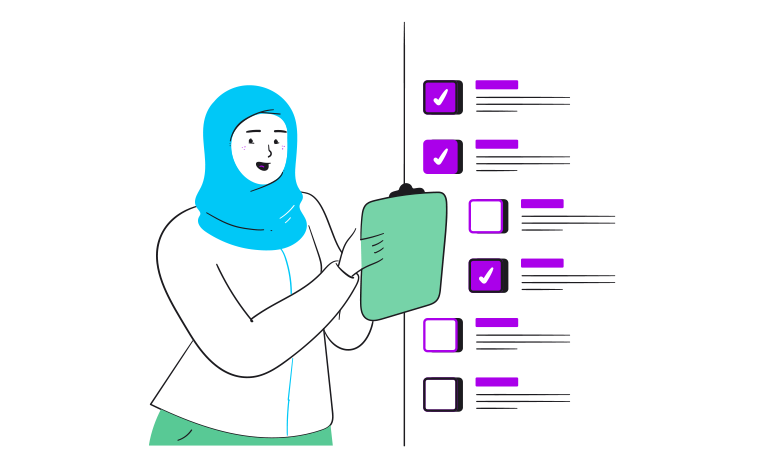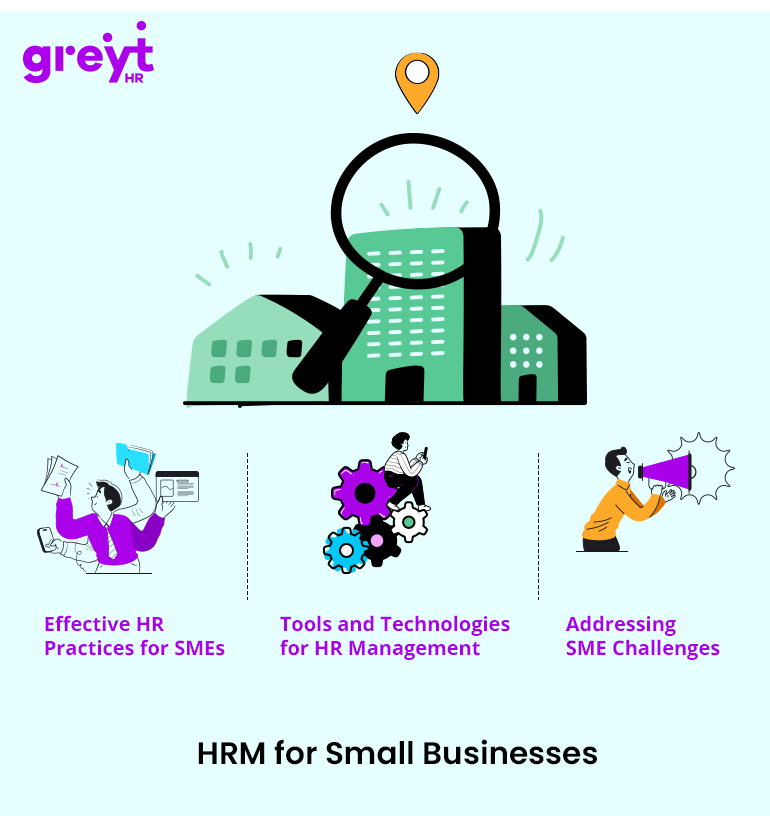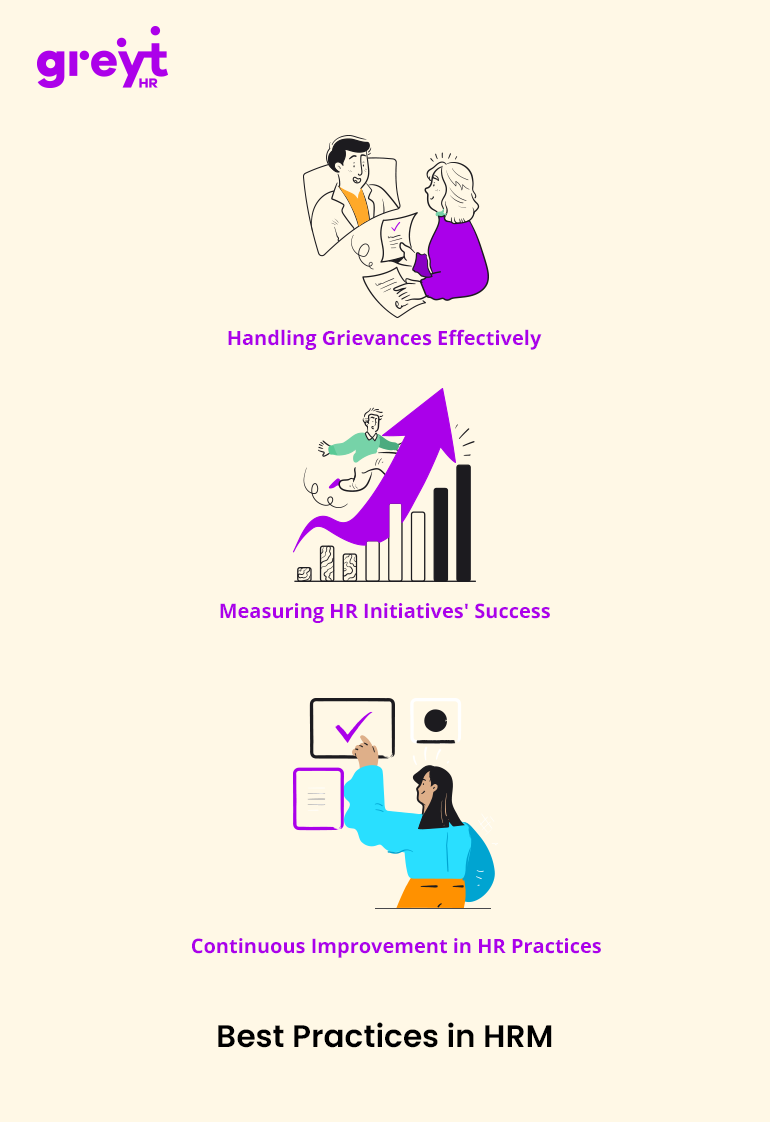Table of Contents
- 1. Strategic HRM
- 2. Diversity and Inclusion in the Workplace
- 3. HRM Metrics and Analytics
- 4. Future Trends in HRM
- 5. Legal and Ethical Considerations
- 6. HRM for Small Businesses
- 7. Employee Relations and Engagement
- 8. Best Practices in HRM
- 9. Conclusion
- 10. FAQ
What is HRM?
Today, let's see the world of Human Resource Management (HRM) and uncover how it plays a pivotal role in shaping successful organizations. Whether you're new to HRM or looking to enhance your knowledge, this guide will walk you through everything you need to know ‒ from strategic planning to handling employee relations and embracing future trends.
HRM isn't just about hiring and firing ‒ it's about building a team that drives our organization forward. In our region, HRM encompasses various strategies tailored to meet our unique business landscape. Understanding the basics of HRM is essential for anyone looking to navigate this effectively. Let's explore how these strategies can transform workplace dynamics and boost overall success.

Strategic HRM
One key aspect of HRM is strategic alignment. It's about ensuring that our HR strategies are not just reactive but proactive in achieving our business goals. By aligning HR practices with our company's vision, we ensure that every hire, every training program, and every policy contributes directly to our growth and success.
Role of HR in Strategic Planning
Think of HR as our strategic partner in navigating the competitive landscape. They analyze workforce trends, anticipate skill gaps, and collaborate with leadership to devise plans that keep us ahead of the curve. This proactive approach ensures that we're always prepared for challenges and opportunities alike.
Successful HR Initiatives
Let's take a look at some real-world examples where strategic HR initiatives have made a significant impact. For instance, Workramp claims to have implemented a talent development program that not only reduced turnover by 25% but also increased employee satisfaction scores by 15. These initiatives aren't just about numbers—they're about creating a workplace where people thrive.

Diversity and Inclusion in the Workplace
Diversity isn't just a buzzword—it's a game-changer for organizations aiming for innovation and growth. Embracing diversity means tapping into a wide range of perspectives, experiences, and talents that drive creativity and problem-solving. Here’s how we can foster a truly inclusive workplace:
Benefits and Strategies for Diversity
Did you know that diverse teams outperform homogeneous ones by 45% in terms of innovation? By embracing diversity, we not only enrich our workplace culture but also attract top talent from diverse backgrounds. It's about creating an environment where everyone feels valued and empowered to contribute their best.
Overcoming Diversity Challenges
While diversity brings immense benefits, it also comes with its challenges. From cultural misunderstandings to unconscious bias, HR plays a crucial role in addressing these issues. By implementing inclusive policies, providing diversity training, and promoting open dialogue, we can create a workplace where everyone feels respected and supported.
HRM Metrics and Analytics
Numbers tell a story, especially in HRM. By tracking key metrics and leveraging analytics, we gain valuable insights into our workforce and organizational health. Let's dive into the metrics that matter and how they drive informed decision-making:
Key HR Metrics
From turnover rates to employee engagement scores, these metrics provide us with a pulse on our organization. For example, tracking turnover can reveal trends that prompt us to improve retention strategies, while engagement scores help us gauge morale and productivity levels.
Leveraging Analytics for Workforce Planning
Analytics isn't just about looking backward—it's about predicting future trends and making proactive decisions. For instance, predictive analytics can forecast hiring needs based on projected growth, ensuring we have the right talent in place at the right time. It's about using data to stay agile and responsive to market demands.
Case Studies of Successful HR Analytics
Let's take inspiration from Wire19's report, which used HR analytics to streamline its recruitment process and reduce time-to-hire by 45%. By analyzing candidate data and refining their approach, they not only saved costs but also attracted higher-quality talent. These case studies show us the power of analytics in driving HRM success.

Future Trends in HRM
The world of HRM is evolving rapidly, shaped by technological advancements and changing workforce expectations. Approaches to human resource management have evolved, and organizations must adapt to these changes to remain competitive. Here are some trends that are set to redefine HR practices in the coming years:
Technological Impact on HRM
Technology is revolutionizing HR management—from AI-powered recruitment tools to cloud-based HRIS systems. These innovations not only streamline processes but also enhance the employee experience. Imagine accessing payroll information or applying for leave with just a few clicks—that's the future of HRM.
Preparing for Future HR Trends
As HR professionals, it's crucial to stay ahead of the curve. Trends like remote work flexibility, gig economy integration, and digital HR platforms are becoming the new norm. By embracing these trends and investing in upskilling our HR team, we ensure we're ready for whatever the future holds.
Sustainability Practices in HRM
Sustainability isn't just about going green—it's about ethical practices that benefit our planet and people. HR can lead the charge by promoting eco-friendly initiatives, reducing carbon footprints, and championing ethical sourcing. It's about aligning our organizational values with sustainable practices that resonate with employees and stakeholders alike.
Legal and Ethical Considerations
In HRM, compliance isn't optional—it's essential. Let's explore the legal and ethical frameworks that guide our HR practices and ensure we operate with integrity and fairness:
Employment Laws and Compliance
Navigating employment laws can be complex, especially with regulations specific to our region. HR ensures we comply with labor laws related to hiring, termination, wages, and working conditions. By staying updated and adhering to legal requirements, we protect our organization and foster employee trust.
Ethical Issues in HRM
Ethics are the foundation of our HR practices. From handling confidential information to promoting fairness in recruitment, HR professionals uphold ethical standards that build credibility and trust. It's about doing the right thing, even when faced with tough decisions.
Promoting Ethical Workplace Practices
Creating an ethical workplace isn't just about policies—it's about cultivating a culture of integrity and accountability. HR promotes ethical behavior through training programs, whistleblower policies, and transparent communication channels. By setting a solid example, we create a workplace where everyone feels respected and valued.
HRM for Small Businesses
Small businesses face unique HR challenges but also have opportunities to create a dynamic and supportive workplace. Let's explore how small businesses can effectively manage their HR functions:
Effective HR Practices for SMEs
For SMEs, HR is about wearing multiple hats—from recruitment and payroll to employee relations. By prioritizing HR functions that align with our growth goals, we can build a strong foundation for success. It's about finding scalable solutions that fit our size and budget.
Tools and Technologies for HR Management
Technology levels the playing field for SMEs. Cloud-based HR systems, digital recruitment platforms, and employee self-service portals streamline operations and improve efficiency. These tools not only save time but also empower us to focus on strategic HR initiatives that drive business growth.
Addressing SME Challenges
From limited resources to competing priorities, SMEs face challenges that require creative solutions. HR can play a strategic role by outsourcing non-core HR functions, fostering a culture of innovation, and investing in employee development. By overcoming these challenges, we position ourselves for sustainable growth and success.

Employee Relations and Engagement
Our people are our greatest asset, and HR plays a crucial role in nurturing positive relationships and fostering engagement. Here’s how we can create a workplace where everyone feels valued and motivated:
Building Positive Relations
Employee relations isn't just about conflict resolution—it's about building trust and mutual respect. HR fosters positive relations through open communication, team-building activities, and recognition programs that celebrate achievements.
Techniques for Increasing Engagement
Engaged employees are more productive and loyal. HR can boost engagement through initiatives like flexible work arrangements, career development opportunities, and wellness programs. It's about creating a work environment where everyone feels invested in our collective success.
Measuring Employee Satisfaction
How do we know if our efforts are paying off? Employee satisfaction surveys, feedback mechanisms, and performance reviews provide valuable insights into morale and satisfaction levels. By listening to our team and acting on their feedback, we continuously improve our workplace culture.

Best Practices in HRM
Let's wrap up with some best practices that guide successful HRM:
Handling Grievances Effectively
When issues arise, HR steps in to listen, investigate, and resolve grievances fairly and promptly. It's about maintaining trust and ensuring a respectful workplace where concerns are addressed with sensitivity and professionalism.
Measuring HR Initiatives' Success
Numbers matter in HRM. By tracking metrics like turnover rates, cost per hire, and training ROI, we assess the effectiveness of our HR initiatives. These metrics help us refine strategies, allocate resources wisely, and demonstrate HR's impact on organizational goals.
Continuous Improvement in HR Practices
HRM is a journey of continuous improvement. By staying informed about industry trends, embracing feedback, and investing in professional development, we evolve our practices to meet the changing needs of our organization and workforce.

Conclusion
Over the decades, Human Resource Management (HRM) has evolved into a cornerstone of organizational success. According to CultureMonkey, 89% of HR leaders emphasize ongoing employee development to retain talent and stay competitive. Strategic HRM boosts financial performance by 46%, underscoring its importance in aligning HR strategies with business objectives.
Embracing HR technology is crucial; HR Vision found that 74% of companies plan to increase HR tech investments, recognizing its role in streamlining processes. Tools like greytHR, offering payroll, self-service, and attendance tracking, exemplify this trend. Ethical HR practices build trust and reduce misconduct by 33%, as the Ethics Resource Center reported.
Integrating these insights can create a thriving workplace. A future-ready HR strategy leverages technology, fosters inclusivity, and maintains ethical integrity. GreytHR’s comprehensive HR solutions free HR professionals to focus on strategic initiatives, driving organizational success. Understanding the importance of HR management is crucial for organizations aiming to thrive in a competitive landscape.
Embrace the evolving HRM landscape, using strategic insights and cutting-edge tools to propel us forward and create an environment where every team member excels.
FAQ
How does HRM shape workplace culture?
HRM really sets the vibe at work—it's all about creating policies that bring people together. From fostering teamwork to celebrating diversity, HRM ensures our workplace is inclusive and positive, where everyone feels valued and motivated.
What strategies can HRM use to manage diverse teams?
Managing diverse teams is all about understanding and respecting different backgrounds. HRM can bridge cultural gaps with training, open communication, and team-building activities that celebrate our differences and strengthen our unity.
What are the new challenges in HRM with remote work becoming more common?
With more people working remotely, HRM faces fresh challenges like keeping everyone connected and maintaining productivity. It's about adapting policies and tech tools to support our team wherever they work while keeping our culture strong.
How can HRM harness social media for recruitment and branding?
Social media isn't just for scrolling—it's a powerful tool for HRM. We can showcase our company culture, engage with potential hires, and boost our reputation as a great workplace. It's about strategically using platforms like LinkedIn and Instagram to attract top talent.
Why is HRM increasingly focusing on mental health and well-being?
HRM's role isn't just about work—it's about looking out for our well-being, too. They're rolling out programs that support mental health, promote work-life balance, and ensure we all feel supported and resilient at work.

